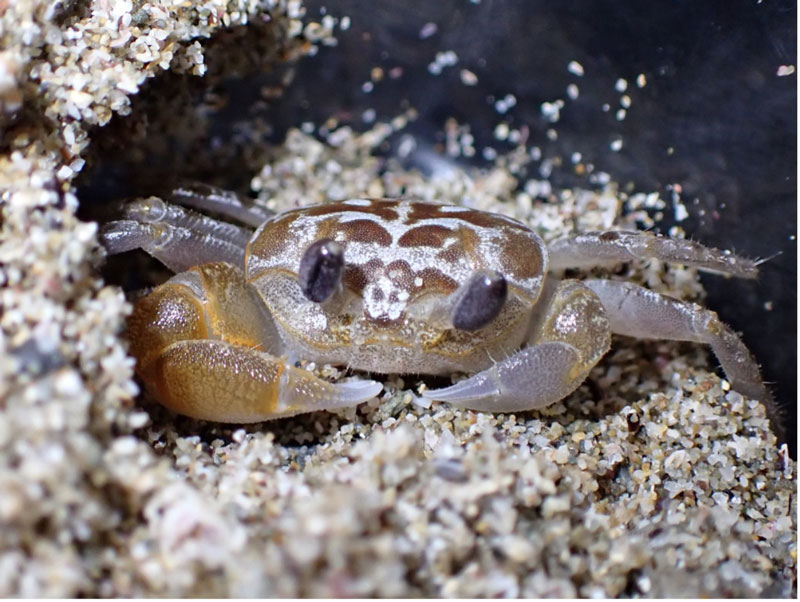2025-06-10 京都大学

ナンヨウスナガニの雄(撮影:後藤龍太郎)。
<関連情報>
- https://www.kyoto-u.ac.jp/ja/research-news/2025-06-10-3
- https://www.kyoto-u.ac.jp/sites/default/files/2025-06/web_2506_Goto-b207f8fb3d47473b623065b60c5d77cc.pdf
- https://www.jstage.jst.go.jp/article/pbr/20/2/20_B200207/_article
スナガニ( Ocypode sinensis)における大鋏脚の振動による発音 Sound production by vibration of the major cheliped in the ghost crab Ocypode sinensis (Ocypodidae)
Ryutaro Goto , Fumio Takeshita, Atsushi Hirai, Ayaka Tsuchihashi, Rin Tanogashira, Luna Yamamori, Akira Asakura, Michitaka Shimomura
Plankton and Benthos Research Published: May 30, 2025
DOI:https://doi.org/10.3800/pbr.20.169
Abstract
Ghost crabs, Ocypode species of the Ocypodidae, are common in temperate to tropical sandy beaches and are well known for producing sounds using their chelipeds. Ocypode sinensis Dai & Yang in Song & Yang, 1985 and its sister species Ocypode cordimana Latreille, 1818 are distinct in this genus in lacking the specialized stridulatory apparatus on the palm that the other congeneric members use for sound production. In this study, we report the sound production behavior of O. sinensis collected from the sandy beaches in southwestern part of the Kii Peninsula (Shirahama and Susami), Wakayama Prefecture, Japan. Three males of O. sinensis collected in June, September, and October, respectively, produced loud sounds by rapidly vibrating their major cheliped at certain intervals at the burrow entrance or inside the burrows. A similar cheliped vibration behavior has been reported as ‘rapping’ in Ocypode jousseaumei (Nobili, 1905) and some other congeneric species, or ‘quivering’ in Ocypode stimpsoni Ortmann, 1897, although O. sinensis apparently did not knock the sand substrate directly, unlike the other species. This sound production behavior was observed only during the day under laboratory conditions. Additionally, the crab sporadically produced clicking sounds, likely by rubbing the mandibles. According to quantitative observations of a male O. sinensis in Shirahama, a train of cheliped vibration lasted 36–193 s, consisting of 9–35 pulses, each of which lasted about 0.98 s on average. The average interval between the pulses within a train was 4.8 s. Although the functions of the sound production by cheliped vibration remain unknown, it may function to attract mates or warn intruders, as suggested in other Ocypode species. In addition, we also briefly observed a similar cheliped vibration behavior in Ocypode ceratophthalmus (Pallas, 1772) in the burrow during this study. Our findings provide a better understanding of the evolution of sound production behavior in Ocypode and Ocypodidae.


